Related Research Articles

The Manhattan Project was a research and development undertaking during World War II that produced the first nuclear weapons. It was led by the United States with the support of the United Kingdom and Canada. From 1942 to 1946, the project was under the direction of Major General Leslie Groves of the U.S. Army Corps of Engineers. Nuclear physicist Robert Oppenheimer was the director of the Los Alamos Laboratory that designed the actual bombs. As engineer districts by convention carried the name of the city where they were located, the Army component of the project was designated the Manhattan District; Manhattan gradually superseded the official codename, Development of Substitute Materials, for the entire project. Along the way, the project absorbed its earlier British counterpart, Tube Alloys. The Manhattan Project began modestly in 1939, but grew to employ more than 130,000 people and cost nearly US$2 billion. Over 90 percent of the cost was for building factories and to produce fissile material, with less than 10 percent for development and production of the weapons. Research and production took place at more than thirty sites across the United States, the United Kingdom, and Canada.

Val Logsdon Fitch was an American nuclear physicist who, with co-researcher James Cronin, was awarded the 1980 Nobel Prize in Physics for a 1964 experiment using the Alternating Gradient Synchrotron at Brookhaven National Laboratory that proved that certain subatomic reactions do not adhere to fundamental symmetry principles. Specifically, they proved, by examining the decay of K-mesons, that a reaction run in reverse does not retrace the path of the original reaction, which showed that the reactions of subatomic particles are not indifferent to time. Thus the phenomenon of CP violation was discovered. This demolished the faith that physicists had that natural laws were governed by symmetry.

Operation Sandstone was a series of nuclear weapon tests in 1948. It was the third series of American tests, following Trinity in 1945 and Crossroads in 1946, and preceding Ranger. Like the Crossroads tests, the Sandstone tests were carried out at the Pacific Proving Grounds, although at Enewetak Atoll rather than Bikini Atoll. They differed from Crossroads in that they were conducted by the Atomic Energy Commission, with the armed forces having only a supporting role. The purpose of the Sandstone tests was also different: they were primarily tests of new bomb designs rather than of the effects of nuclear weapons. Three tests were carried out in April and May 1948 by Joint Task Force 7, with a work force of 10,366 personnel, of whom 9,890 were military.
Sandia Base was the principal nuclear weapons installation of the United States Department of Defense from 1946 to 1971. It was located on the southeastern edge of Albuquerque, New Mexico. For 25 years, the top-secret Sandia Base and its subsidiary installation, Manzano Base, carried on the atomic weapons research, development, design, testing, and training commenced by the Manhattan Project during World War II. Fabrication, assembly, and storage of nuclear weapons was also done at Sandia Base. The base played a key role in the United States nuclear deterrence capability during the Cold War. In 1971 it was merged into Kirtland Air Force Base.
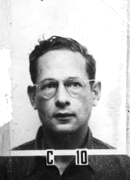
Robert Serber was an American physicist who participated in the Manhattan Project. Serber's lectures explaining the basic principles and goals of the project were printed and supplied to all incoming scientific staff, and became known as The Los Alamos Primer. The New York Times called him “the intellectual midwife at the birth of the atomic bomb.”

Jack W. Aeby was an American environmental physicist most famous for having taken the only well-exposed color photograph of the first detonation of a nuclear weapon on July 16, 1945 at the Trinity nuclear test site in New Mexico.

Samuel Abraham Goudsmit was a Dutch-American physicist famous for jointly proposing the concept of electron spin with George Eugene Uhlenbeck in 1925.

Project Alberta, also known as Project A, was a section of the Manhattan Project which assisted in delivering the first nuclear weapons in the atomic bombing of Hiroshima and Nagasaki during World War II.

The Dayton Project was a research and development project to produce polonium during World War II, as part of the larger Manhattan Project to build the first atomic bombs. Work took place at several sites in and around Dayton, Ohio. Those working on the project were ultimately responsible for creating the polonium-based modulated neutron initiators which were used to begin the chain reactions in the atomic bombs.

Hugh Bradner was an American physicist at the University of California who is credited with inventing the neoprene wetsuit, which helped to revolutionize scuba diving and surfing.

Los Alamos is a town in Los Alamos County, New Mexico, United States, that is recognized as the development and creation place of the atomic bomb—the primary objective of the Manhattan Project by Los Alamos National Laboratory during World War II. The town is located on four mesas of the Pajarito Plateau, and has a population of 12,019. It is the county seat and one of two population centers in the county known as census-designated places (CDPs); the other is White Rock.
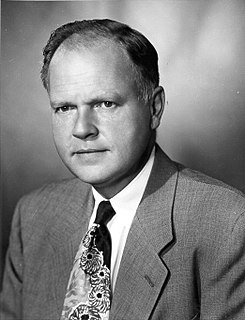
Alvin Cushman Graves was an American nuclear physicist who served at the Manhattan Project's Metallurgical Laboratory and the Los Alamos Laboratory during World War II. After the war, he became the head of J (Test) Division at Los Alamos, and was director or assistant director of numerous nuclear weapons tests during the 1940s and 1950s. Graves was badly injured in the 1946 laboratory criticality accident in Los Alamos that killed Louis Slotin, but recovered.
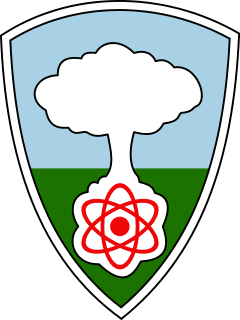
The Armed Forces Special Weapons Project (AFSWP) was a United States military agency responsible for those aspects of nuclear weapons remaining under military control after the Manhattan Project was succeeded by the Atomic Energy Commission on 1 January 1947. These responsibilities included the maintenance, storage, surveillance, security and handling of nuclear weapons, as well as supporting nuclear testing. The AFSWP was a joint organization, staffed by the United States Army, United States Navy and United States Air Force; its chief was supported by deputies from the other two services. Major General Leslie R. Groves, the former head of the Manhattan Project, was its first chief.
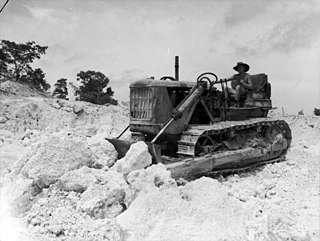
No. 5 Airfield Construction Squadron (5ACS) was a Royal Australian Air Force (RAAF) construction squadron. The unit was first formed in July 1942 and served in the New Guinea Campaign and Borneo Campaign during World War II. The squadron was one of only a few RAAF airfield construction units to be retained at the end of the war, and formed part of Australia's contribution to the occupation of Japan from 1945 until it was disbanded in June 1949. 5ACS was re-raised in August 1951 and worked on several RAAF airfields in Australia. It also provided small detachments of engineers to support RAAF deployments to South Vietnam and Thailand during the Vietnam War. The squadron was the RAAF's only airfield construction unit from 1961 onward, and was disbanded in December 1974.
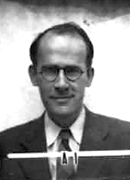
Robert Bigham Brode was an American physicist, who during World War II led the group at the Manhattan Project's Los Alamos Laboratory that developed the fuses used in the atomic bombing of Hiroshima and Nagasaki.
McAllister Hull was an American theoretical physicist who took part in the creation of the atomic bomb that was dropped over Nagasaki in 1945, ending World War II.

Britain contributed to the Manhattan Project by helping initiate the effort to build the first atomic bombs in the United States during World War II, and helped carry it through to completion in August 1945 by supplying crucial expertise. Following the discovery of nuclear fission in uranium, scientists Rudolf Peierls and Otto Frisch at the University of Birmingham calculated, in March 1940, that the critical mass of a metallic sphere of pure uranium-235 was as little as 1 to 10 kilograms, and would explode with the power of thousands of tons of dynamite. The Frisch–Peierls memorandum prompted Britain to create an atomic bomb project, known as Tube Alloys. Mark Oliphant, an Australian physicist working in Britain, was instrumental in making the results of the British MAUD Report known in the United States in 1941 by a visit in person. Initially the British project was larger and more advanced, but after the United States entered the war, the American project soon outstripped and dwarfed its British counterpart. The British government then decided to shelve its own nuclear ambitions, and participate in the American project.
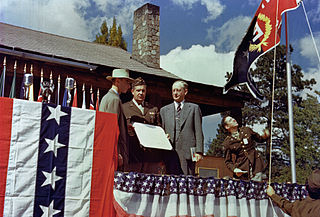
The Los Alamos Laboratory, also known as Project Y, was a secret laboratory established by the Manhattan Project and operated by the University of California during World War II. Its mission was to design and build the first atomic bombs. Robert Oppenheimer was its first director, serving from 1943 to December 1945, when he was succeeded by Norris Bradbury. In order to enable scientists to freely discuss their work while preserving security, the laboratory was located in a remote part of New Mexico. The wartime laboratory occupied buildings that had once been part of the Los Alamos Ranch School.
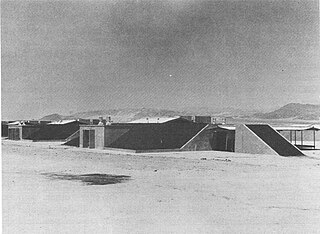
The Salt Wells Pilot Plant was a facility established by the Manhattan Project at the Naval Ordnance Test Station (NOTS) at Inyokern, California, where non-nuclear explosive components of nuclear weapons were manufactured. The first explosives were melted, mixed and poured on 25 July 1945. Between 1945 and 1954, it manufactured explosive components of the Fat Man, Mark 4, Mark 5 and Mark 12 nuclear bombs. The Salt Wells Pilot Plant also helped design, equip, and train workers for the Burlington AEC Plant in Iowa and the Pantex Plant in Texas. The Salt Wells Pilot Plant closed on 30 June 1954.
Oscar Seborer, codenamed Godsend, was an atomic spy for the Soviet Union who worked at the Clinton Engineer Works in Oak Ridge, Tennessee, and the Los Alamos Laboratory in New Mexico.
References
Sources
- Bederson, Benjamin (2004). "SEDs at Los Alamos:". In Kelly, Cynthia C. (ed.). Remembering the Manhattan Project: a Personal Memoir. World Scientific Publishing. pp. 81–88. ISBN 9812560408.